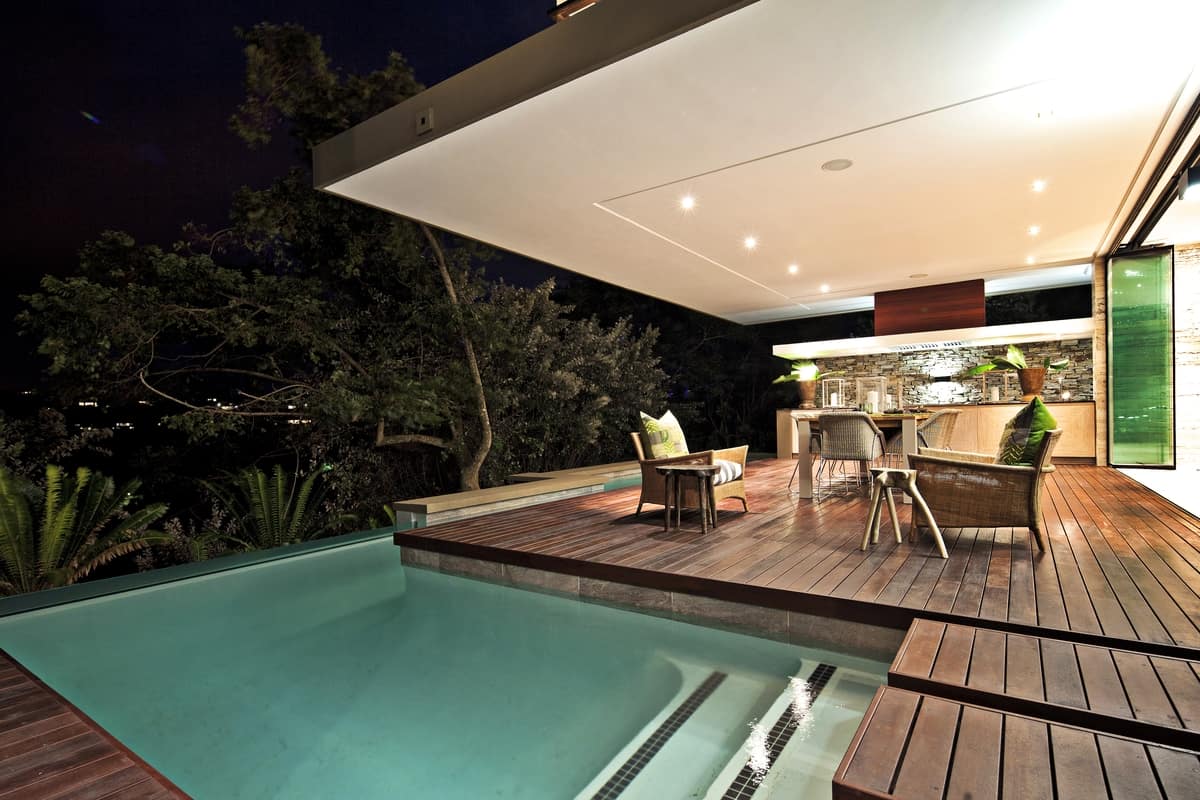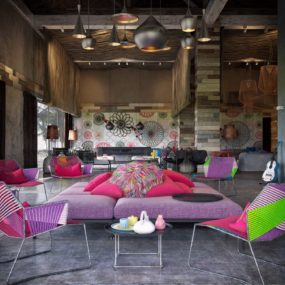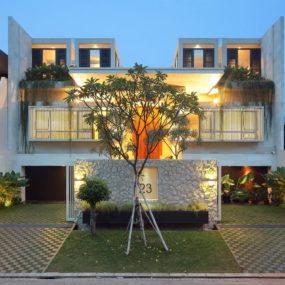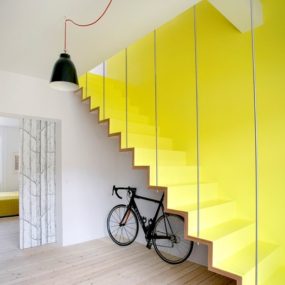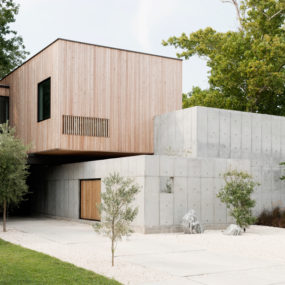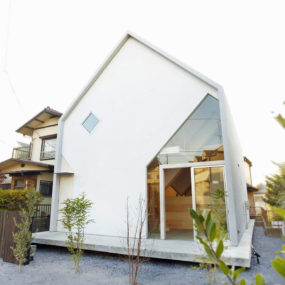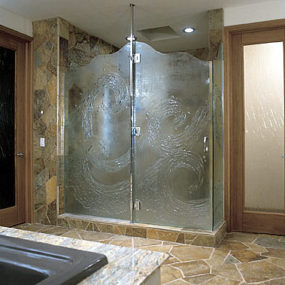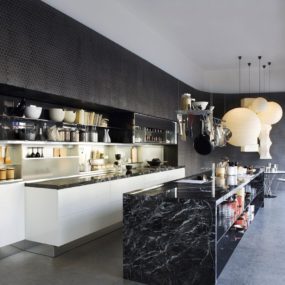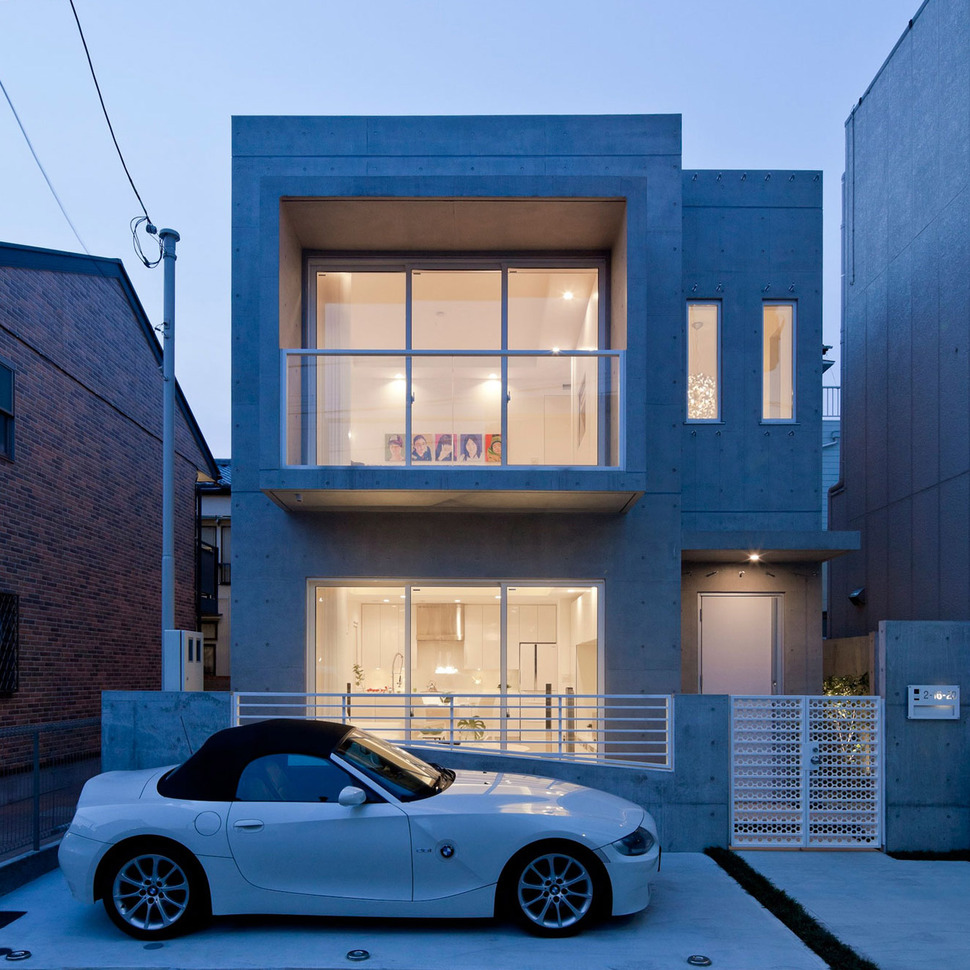
Located in Tokyo, Japan, this modern version of a Zen Home is designed by RCK Design and represents an atmosphere of peace and equilibrium with its 120sqm volume (1291sqft). With an abundance of natural sunlight bathing the white walls and minimalist décor the Zen Home inspires to reinvigorate the soul of all who enter and to do so the architect has included a number of subtle design features to promote this well being. Included with these Zen features are also a number of smart “green” elements such as a photovoltaic power system that provides all the electrical needs of the home, an electric vehicle outlet, a rainwater catchment system, and an anchoring system for plants to create a living wall for summer cooling and oxygen promotion.
The Zen features of this home began before the home was complete. A ceremony of building purification was held at the site with theh building owner, the architect and the general contractor. The purification process included praying for safe construction, and the process was so successful that part way through construction it managed to come out of a 9.0 earthquake that hit Fukushima unscathed. Built with reinforced concrete, the construction process was of the highest quality.
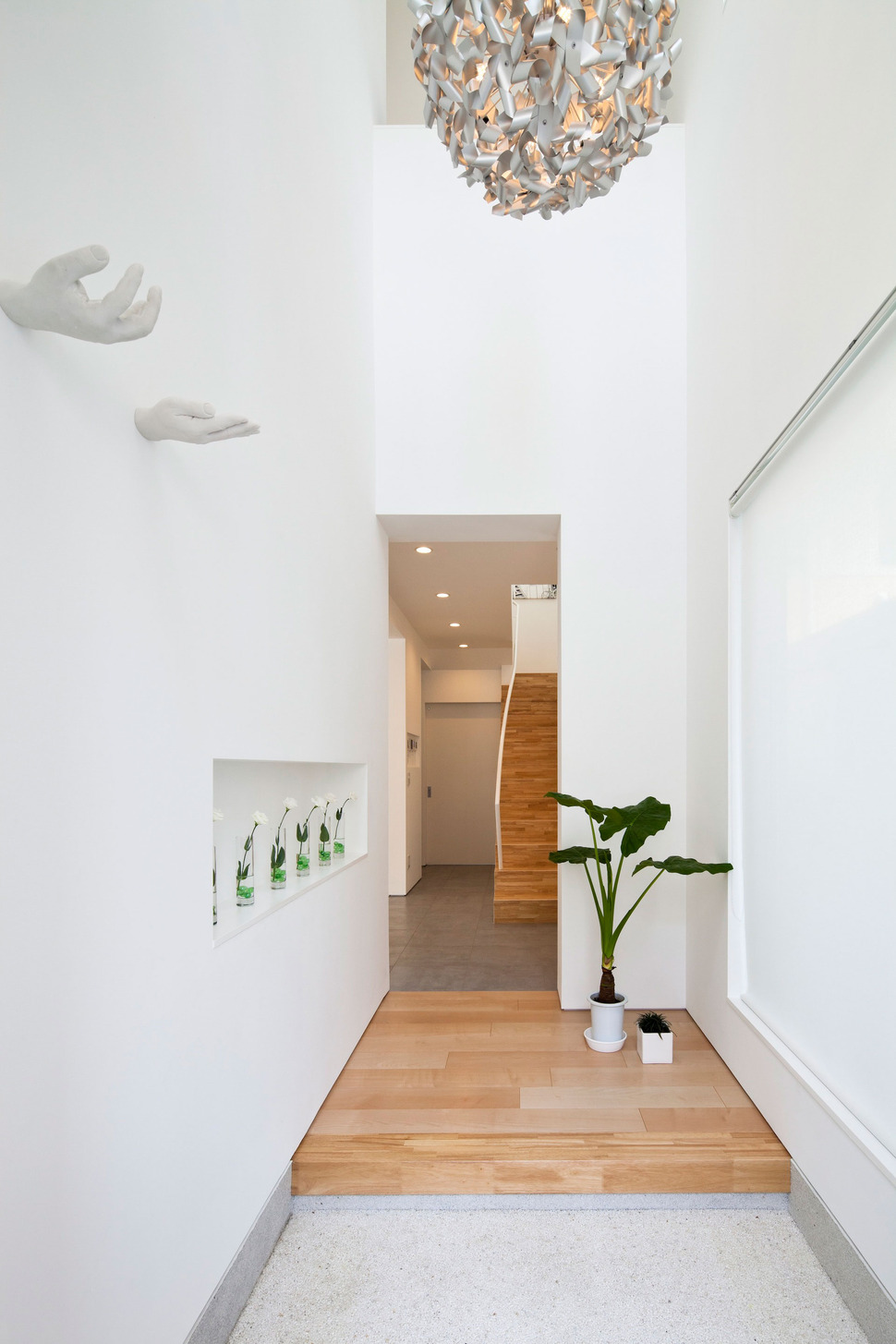
An entry hall is a very important feature of Japanese homes. It is a place for people to remove their shoes and purify their minds. The hand art on the wall is meant to invite guests, good luck and the receiving bountiful natural light through the upward facing palms.. The meaning of the hands is “Eustoma”.

Adding to the well being of the entry hall is the selection of a large lighting pendant made from recycled aluminum. The fixture represents a “kazaguruma” pinwheel for turning luck around, peace, energy and eternal human spirit.
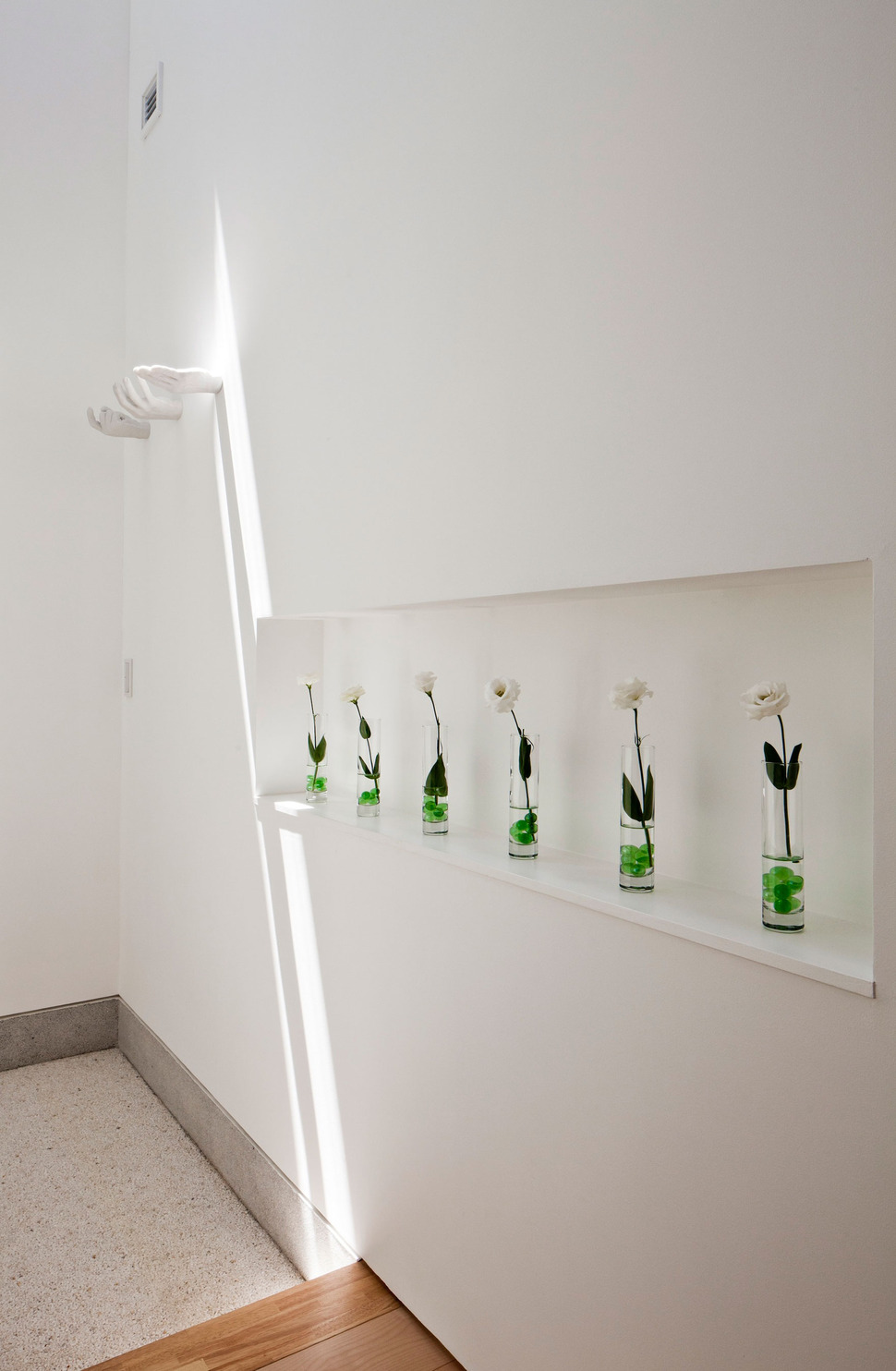
A narrow niche within the hall wall is the perfect place to feature a row of vases, each holding one simple bloom.
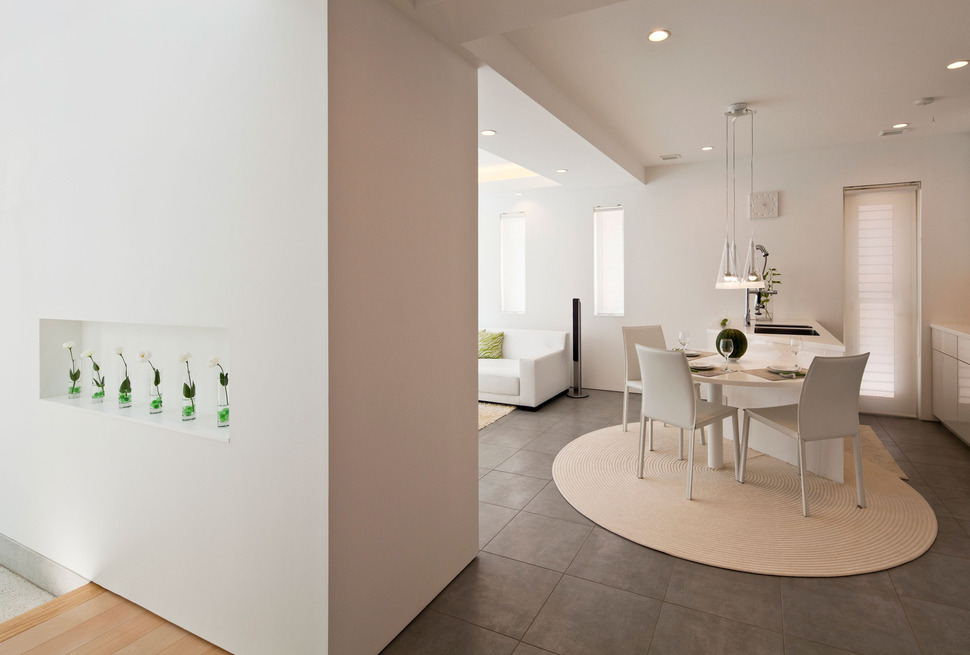
Just around the corner from the entry hall is the dining area, which is attached to the kitchen peninsula. The colour palette is kept to whites and pale neutrals. The soft sand coloured round rug offers an island of tranquility above the slate flooring while also mirroring the round shape of the dining tabletop. The simple lines are chosen to create a sense of harmony and tranquilty.
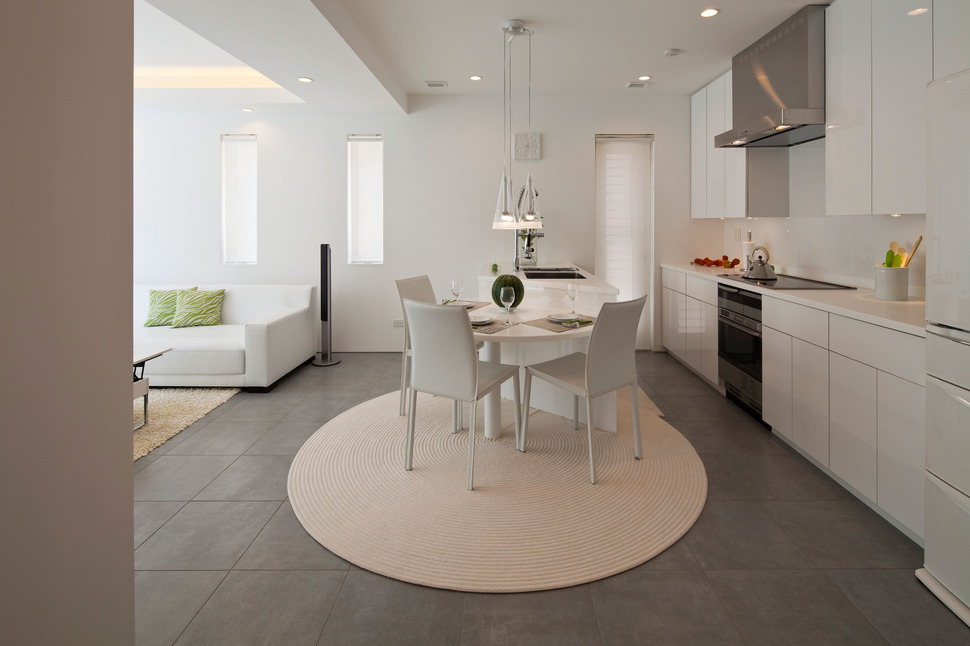
A division is created between the kitchen / dining zone from the living zone via a dropped ceiling section.
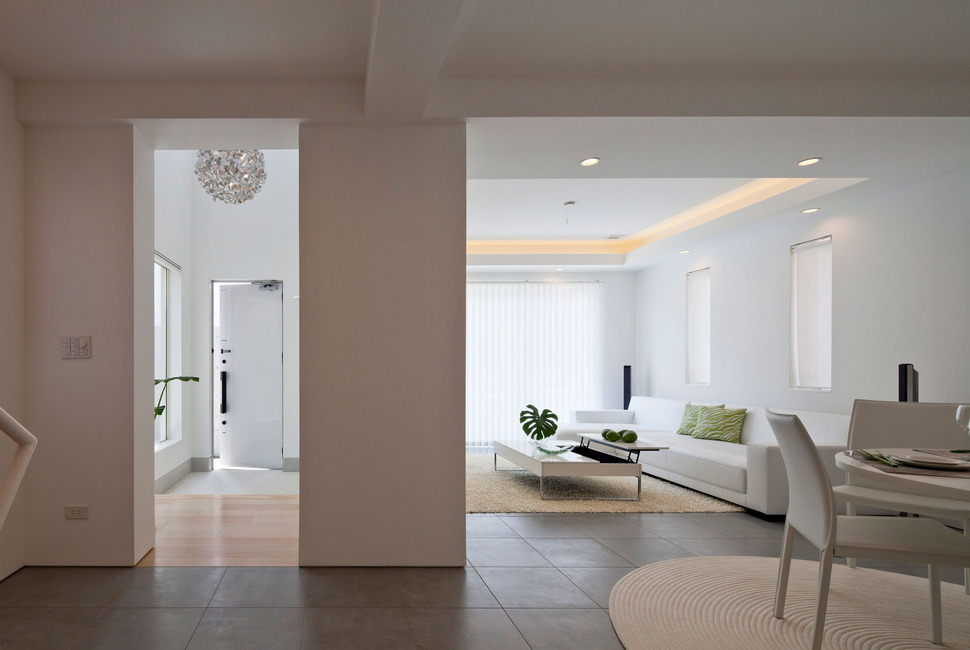
The dropped section of ceiling allows for an ambient lighting strip to surround the living room area creating a halo effect.
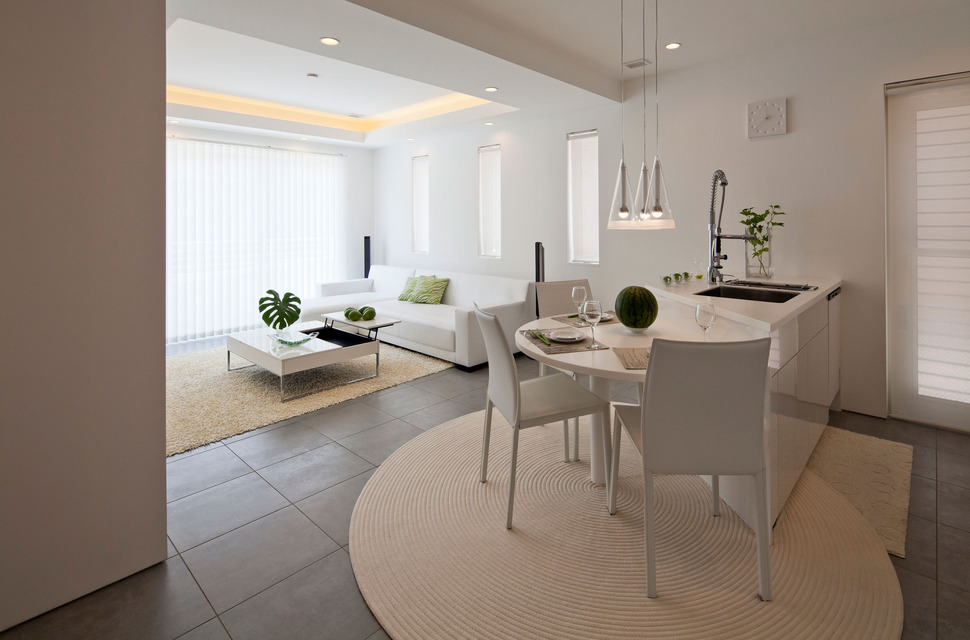
The Japanese mirror blinds used for window treatments where chosen to prevent outsiders from looking in while still allowing natural sunlight to flood the interior core.

Zen interiors incorporate a calm and neutral or earthy colour palette, low furniture, straight lines and minimal accessories. It is all about keeping the home simple and uncluttered allowing as little as possible to stimulate your senses allowing you to focus.
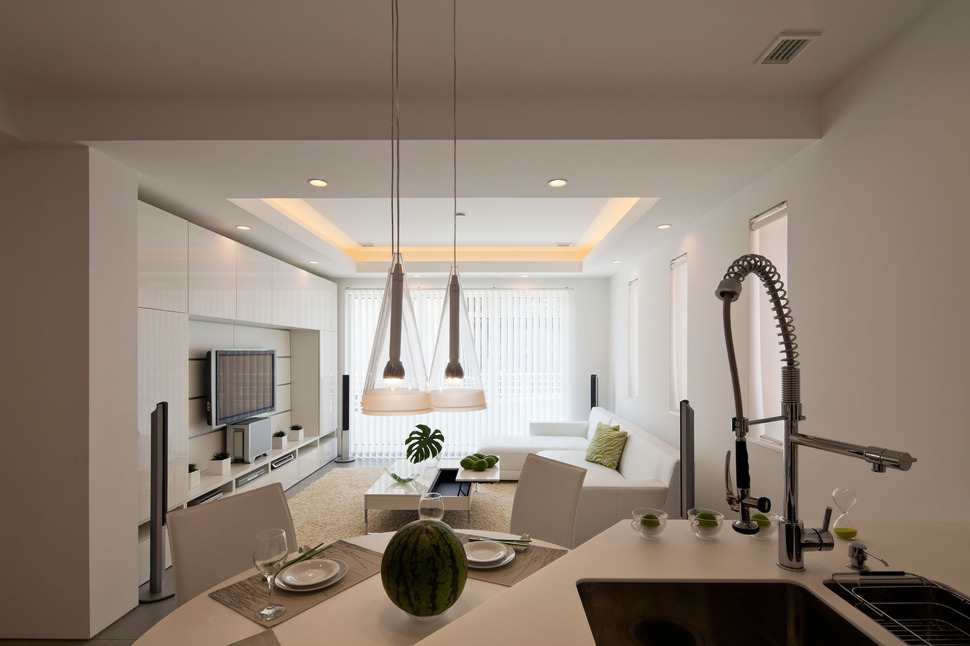
The Zen Home is filled with hidden storage to keep visual lines clear and open.
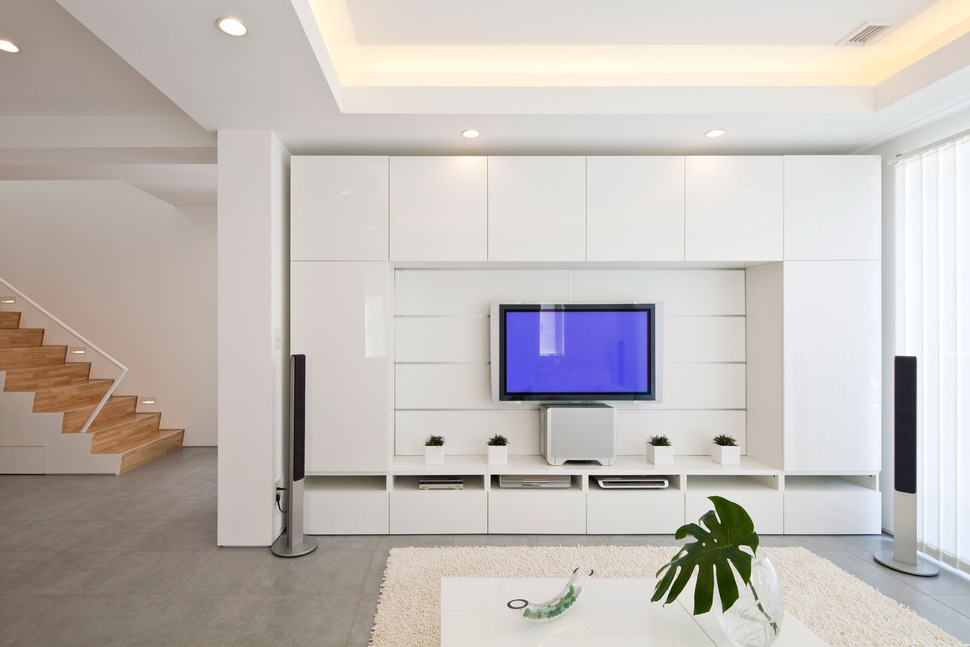
Zen is also about making communication as easy and clear as possible. Creating a connection to the upper volume is the stairwell at the end of the entry hall.
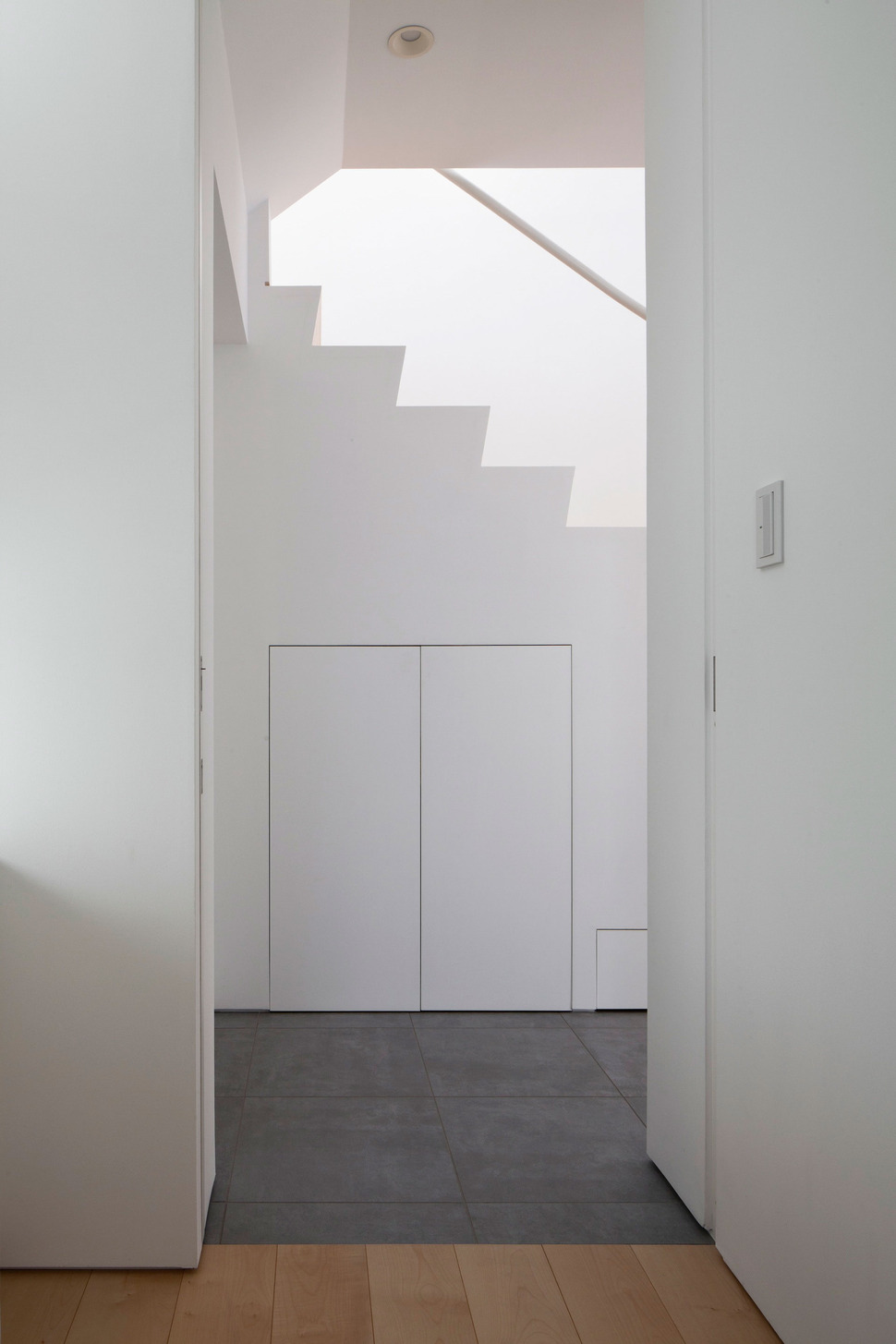
The Stairwell silhouette is a simple geometric sculpture, creating a calm overall look
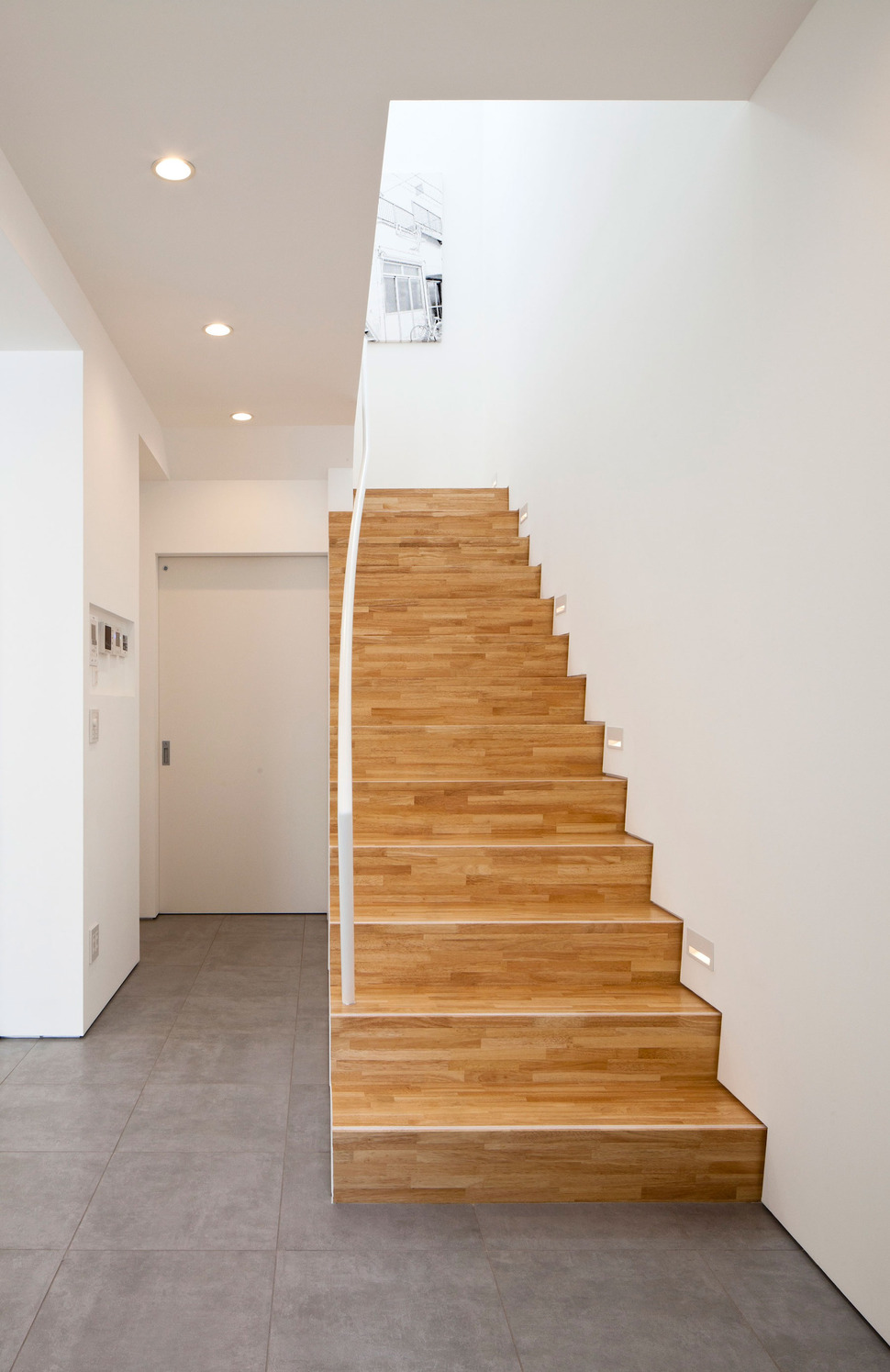
The white curved handrail on the stairwell relieves the tension of the straight lines created by the treads and risers.
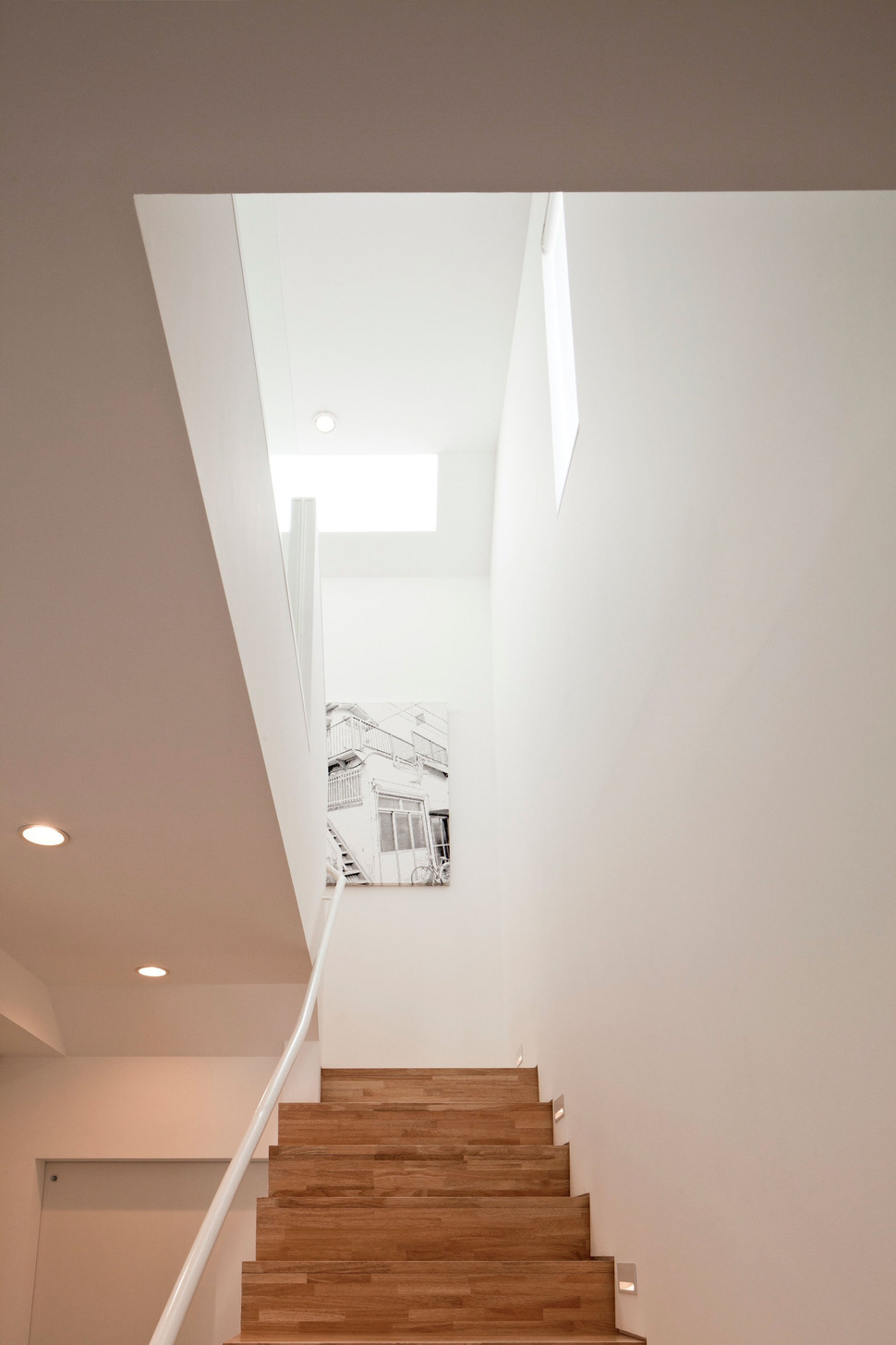
A black and white painting at the top of the stairs is of the client’s previous home and is meant to let the soul of the former residence continue to watch over and guard the homeowners as they begin their new life in a new home.
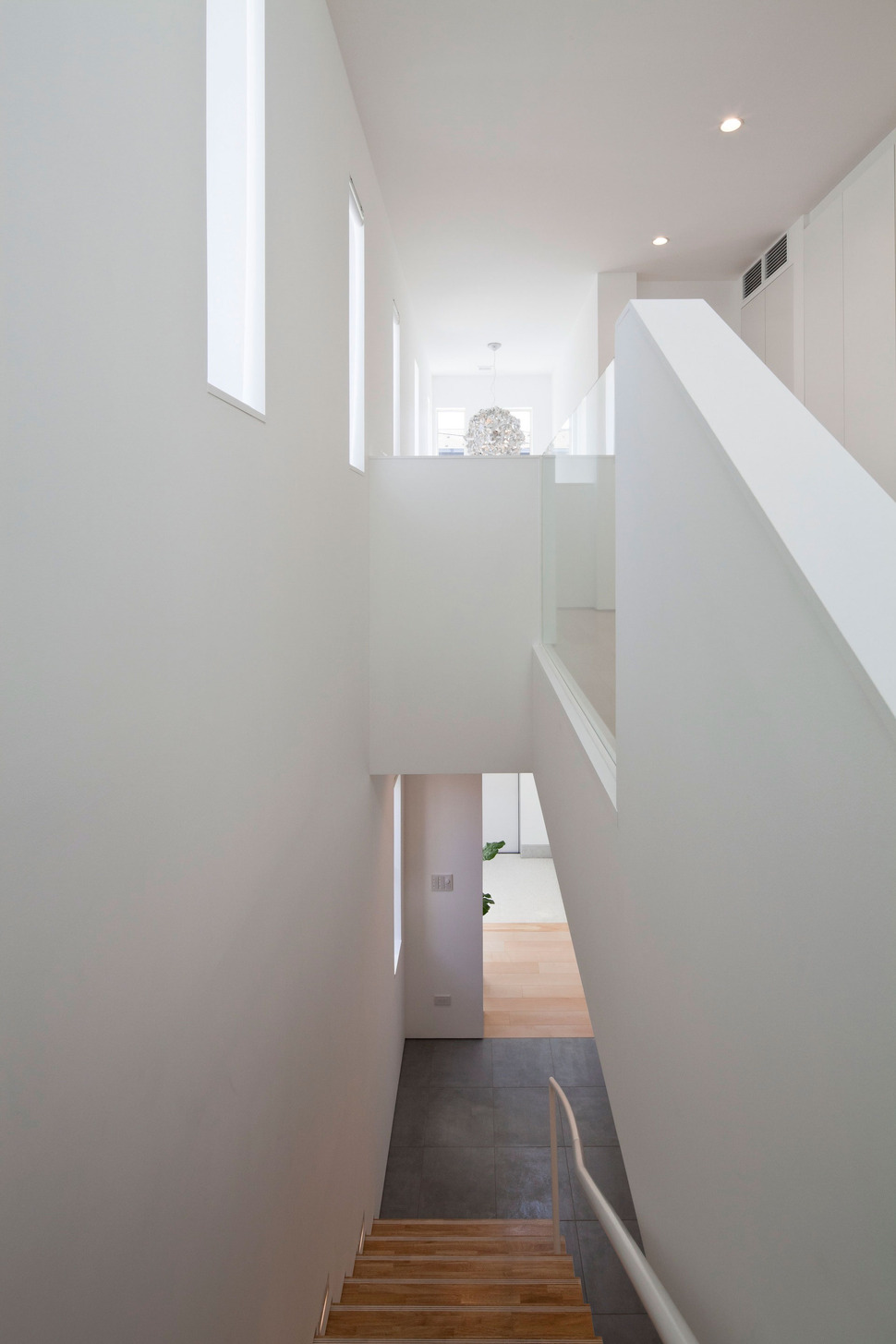
Each of the treads has 3 grooved lines painted for visibility. 3 lines where chosen to represent the threefold raining of Buddhism; higher virtue, higher mind and higher wisdom.
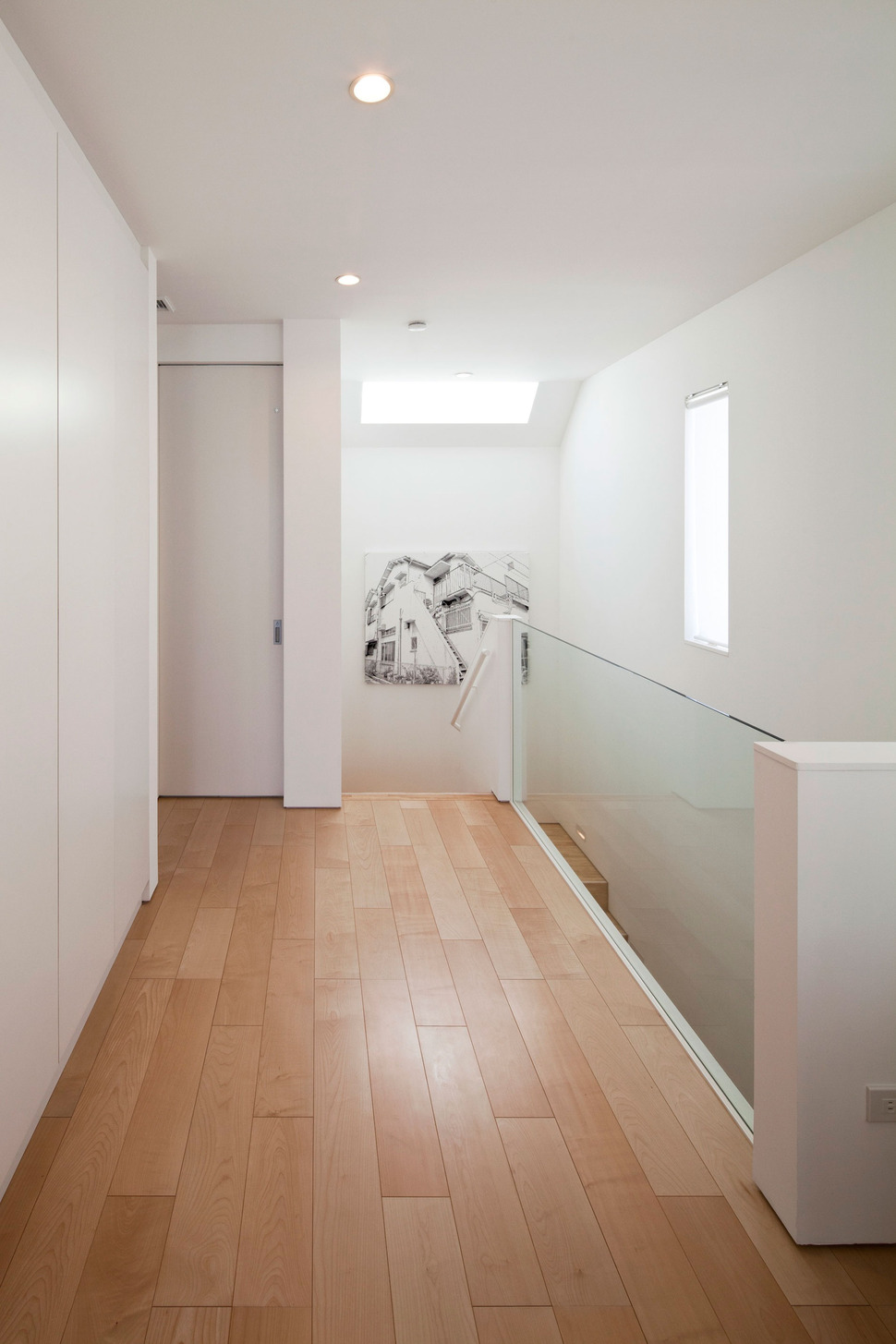
The railing to the stairwell is made from tempered glass to keep the hallway feeling open and airy.
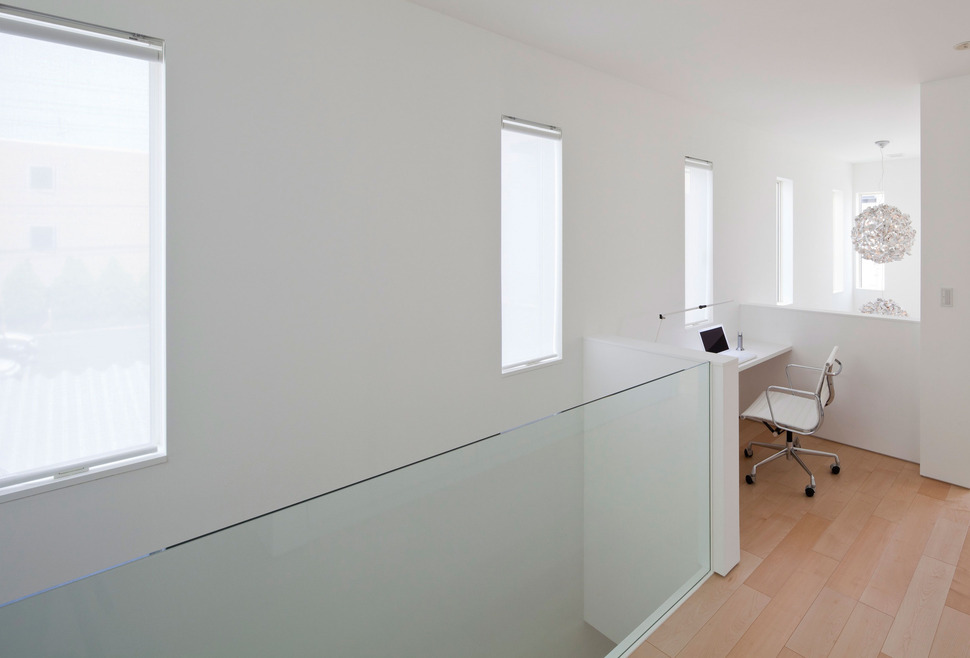
At the far end of the hall a small laptop station is located to create a communication to the lower volume via the pony wall that overlooks the entry hall.
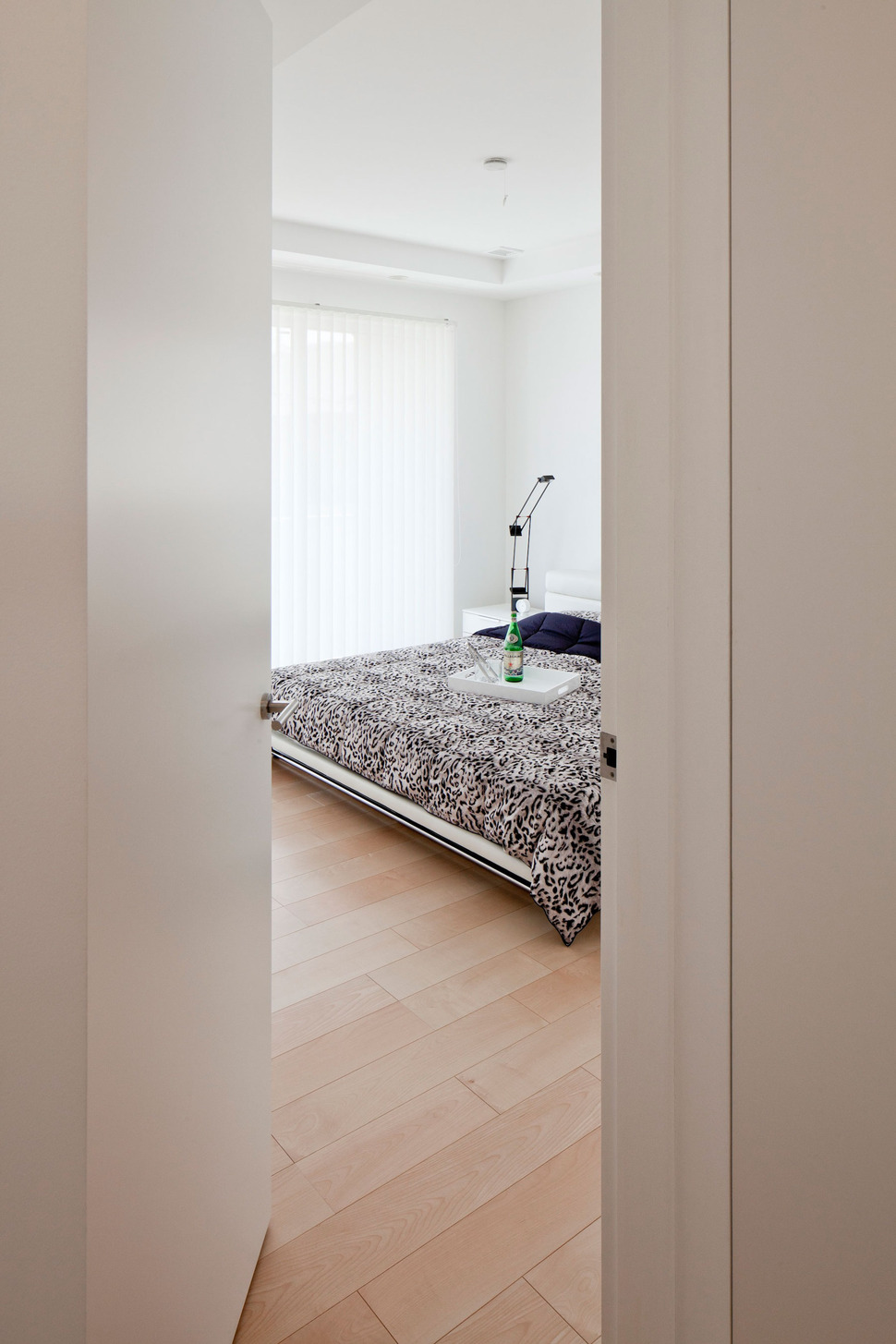
The bedroom is in the upper, private volume and is accessed via a frameless white door.
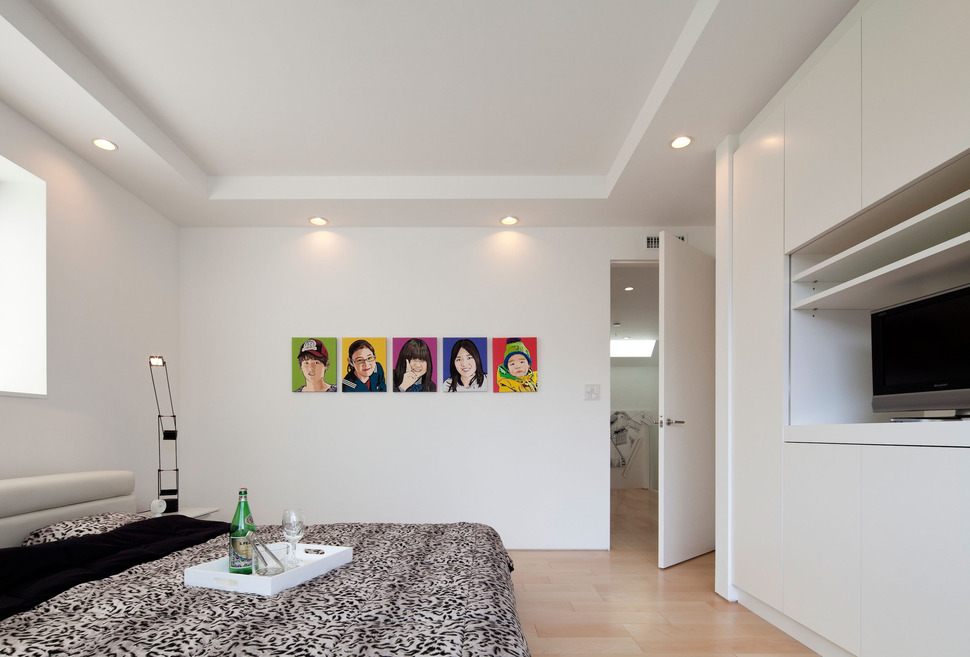
The bedroom incorporates a low bed to continue the theme of low furnishings and the paintings of the client’s grandchildren on the wall creates a continued bond with family via visualization. The added and unusual punches of colour within the art work follows the Zen rules by applying colour only to notable objects.

The bathroom within the Zen House is small but functional. A 3-sided mirror above the vanity accepts and reflects without keeping and is a very important aspect ot Zen design.
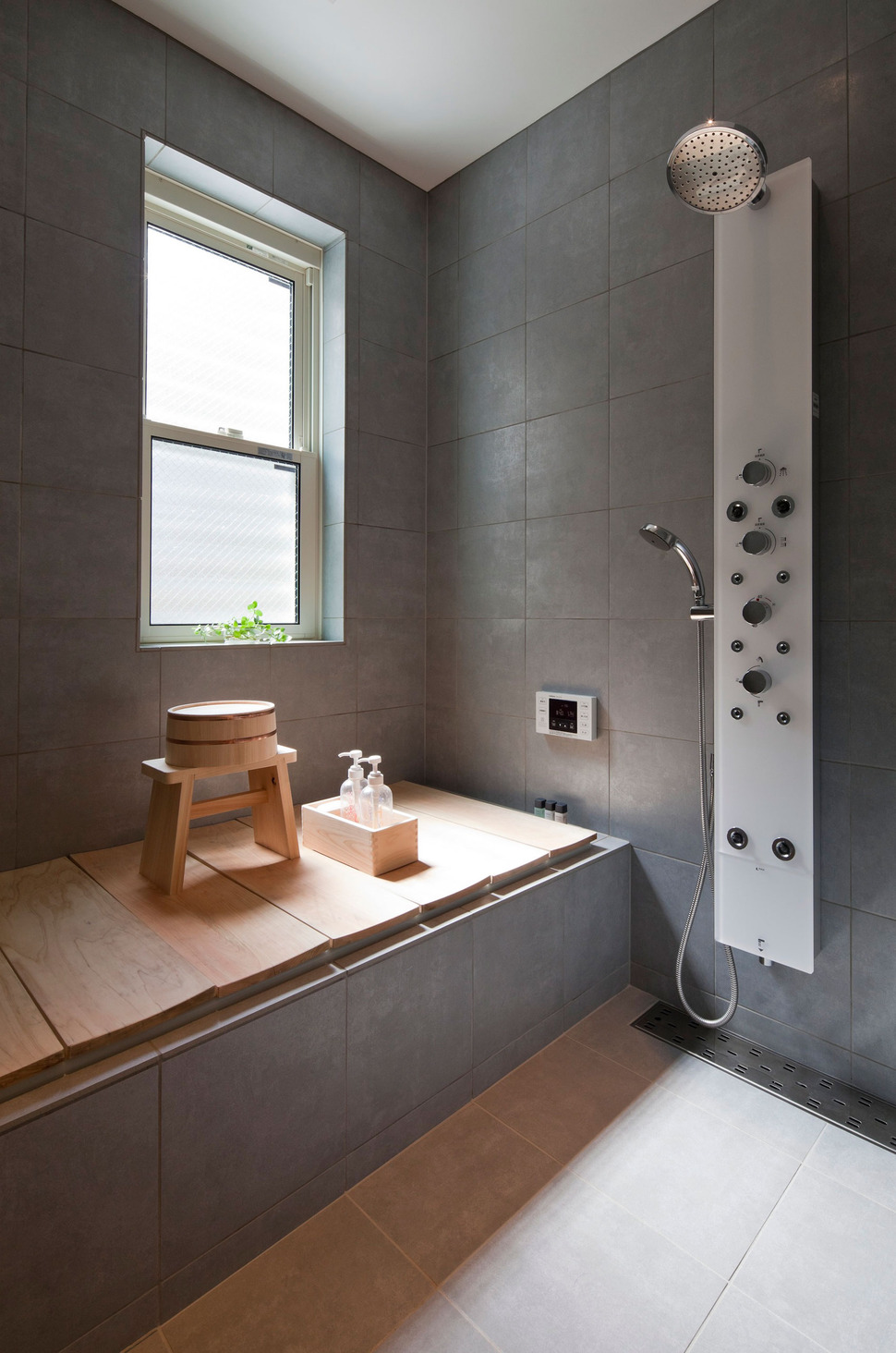
Japanese bathrooms or “onsen” incorporate hot springs, atmosphere, Japanese cypress, wooden lids, buckets and chairs. All these elements are essential.
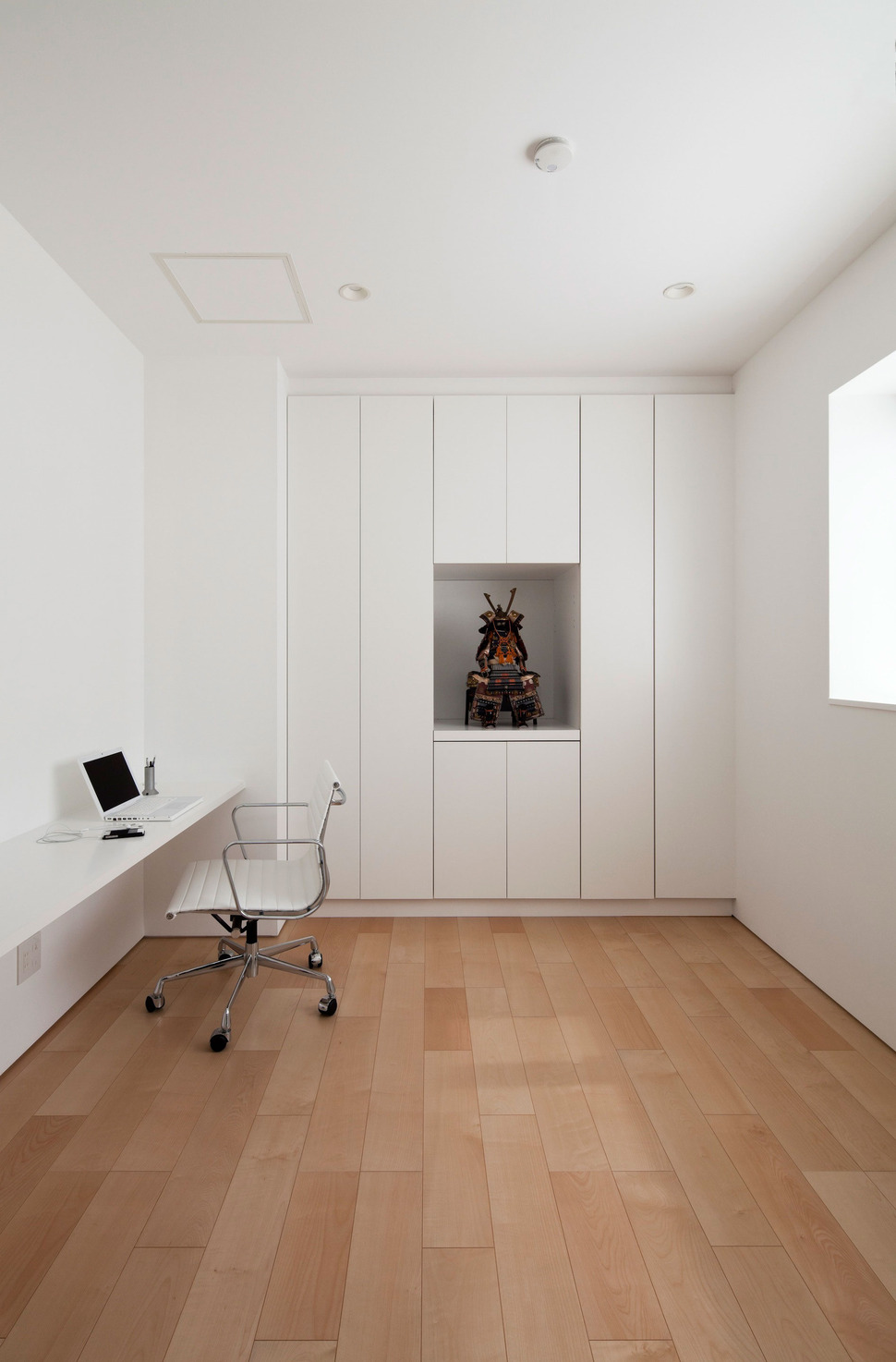
The library includes a small floating desktop and a wall of hidden storage. All surfaces are kept clear to allow for concentration without distraction.

The Zen House is not about living in empty spaces, it is about creating true well being for body, mind and soul.
RCK Design
